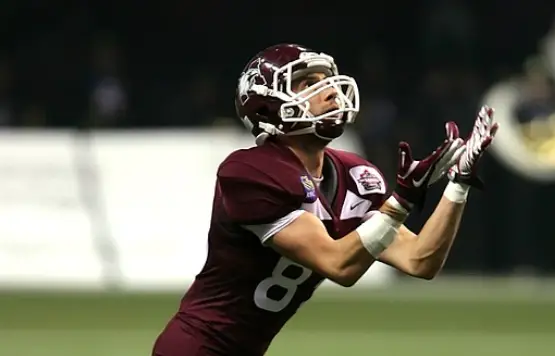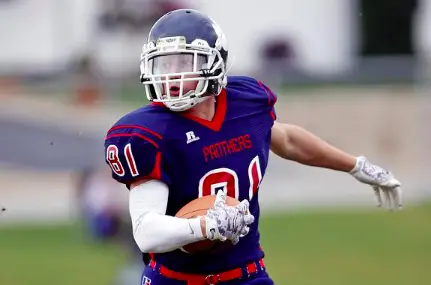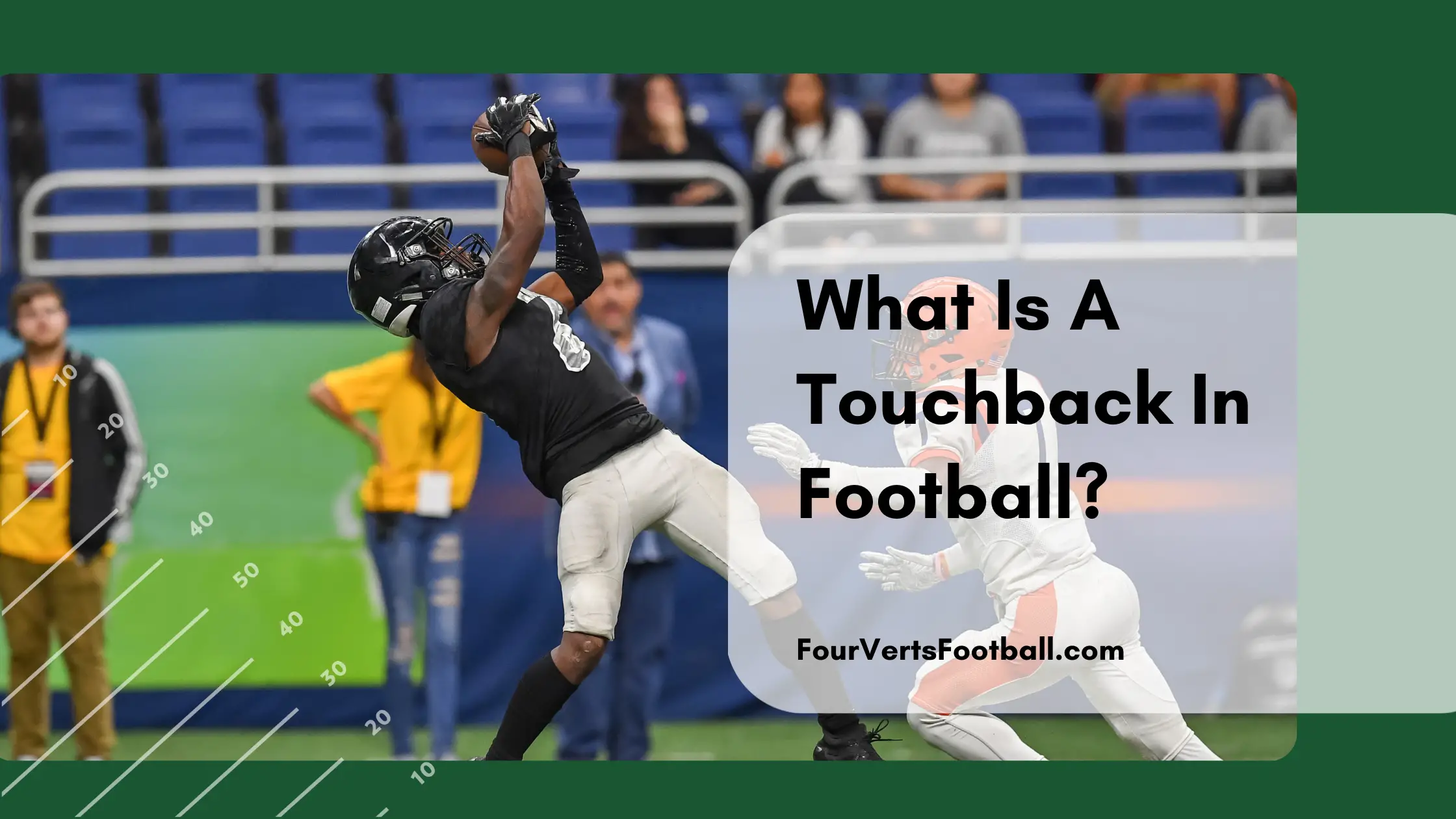A touchback in football occurs after a punt, kick, or turnover is downed behind the goal line.
The next possession will start from the 25-yard line following a touchback on a kickoff or a free-kick. All other touchbacks will result in the next possession starting on the 20 yard line.
What Is The New Touchback Rule?
The newest touchback rule in both the NCAA and the NFL was the change of field position after a touchback.
For years once a touchback occurred the team in possession of the ball would start at the 20-yard line.
This has been changed to the twenty-five-yard line when the new rule was put into place. The NCAA changed to this location in 2012 while the NFL made the change in 2016.
The rule change of the location a possession starts was only changed to affect kickoffs and kicks after a safety.
When a team downs a punt, intercepts the ball in the endzone, or recovers a fumble in their own end zone they will start at the twenty yard.
Why was the touchback rule changed?
The touchback rule was changed primarily to improve player safety. Kickoffs have been deemed one of the plays most likely to cause injury in the NFL.
One injury of focus was concussions. Due to the recent studies on the health issues surrounding concussions the NFL has been working to reduce them.
On a kickoff, the kicking team is going to run the length of the field in an attempt to tackle to kick returner.
Blockers on the kick return team will run in the opposite direction at full speed often creating ugly collisions.
The head trauma involved in these collisions is something the NFL is looking to get rid of. This is why the touchbacks were moved to the twenty-five yard.
By moving the starting position five yards further up the field the NFL has incentivized taking touchbacks. This ultimately reduces the number of kicks that players will choose to return.

The reasoning of health and safety is further proven through the fact the touchback starting position was only changed for kick returns.
When a team takes a touchback via interception or fumble they are still going to start on their twenty-yard line.
This is because these plays did not present a noticeable health risk for the players. Since this is the case the NFL did not have to further incentivize touchbacks on these plays.
Therefore the starting position remained at the twenty-yard line on these plays.
Can They Be returned?
No, a touchback by definition cannot be returned. This is because a touchback only occurs once the ball is downed.
Once the ball is downed the refs will blow their whistles and you will have no chance at a return.
That being said you can still return a ball that is going to land in the endzone.
To do this you simply have to get possession of the ball by catching it or picking it up off the ground and then begin your return.
Difference Between A Touchback And A Safety
The difference between a touchback and a safety is that is safety occurs when a player has possession of the ball outside his goal line and then travels back into it before being downed.
While on a touchback the possession of the ball does not occur until it is behind the goal line.
On a touchback, whether the player is downed right away or decides to not pick the ball up it will be considered a touchback.
Another major difference is that when a safety occurs the team that tackled the player in the endzone are awarded two points. While you do not get points for a touchback.
The final difference between a touchback and a safety is the possession of the ball. When a touchback occurs the team that has possession of the ball will start with the ball at their twenty five yard line.
When a safety occurs the team that had possession of the ball must complete a free kick giving possession of the ball to the other team.
Is It good or bad?
The answer to a touchback being good or bad is usually dependent on what sort of play it happened on. Remember touchbacks can happen on kickoffs, punts, and turnovers.
Kickoff
A touchback off a kickoff is almost always considered a good thing. The only time you do not want a touchback on a kickoff is when you are attempting a squib or onside kick.
When a touchback happens on a kickoff you know the opposing team will not start anywhere further than the twenty-five yard line. This ensures they cannot have a large return from the kickoff.
Punt
A punt is different from a kickoff and typically you want to avoid touchbacks with punts. With a punt, you are ideally trying to pin the ball within the opponent’s 20-yard line.
The perfect punt consists of a coffin corner kick (landing out of bounds close to the goal line) and the ball avoiding a touchback.
This allows punters a much better chance at downing a ball close to the opponent’s goal line. The touchback bringing the ball out to the twenty-yard line is not ideal.
This is because most NFL punters want the opposing team to start much closer to their goal line.
Off A Turnover
Touchbacks on a turnover can occur in two different ways. You can either intercept or recover a ball and get tackled/give yourself up. Or cause a loose fumble previously possessed by the opposing team to go through the back or side of your endzone.
When you make an interception in your own end zone your first decision is if you should take the ball out or not.

If you are tackled within the end zone you will start at the twenty-yard line. If you take it out of the endzone the ball will be placed wherever you end up getting downed.
Taking a touchback on an interception is usually a good play. This is because it is often difficult to return a ball twenty yards.
Though on some occasions it may be in your best interest to not get a touchback. As running it out may allow you to carry the ball past your twenty-yard line giving your team a better field position.
The other way to cause a touchback on a turnover is one of the most interesting plays in football.
If an opponent is running towards your endzone and fumbles and that ball goes through the back or side of the end of the endzone it is a touchback.
Meaning the team that was previously on defense will now take possession of the ball at the twenty-yard line.
In this situation, a touchback is very good. As the opposing team went from being on the verge of a touchdown to losing possession of the ball in a matter of seconds.
That is all on touchbacks in American football to learn more see our guides to touchbacks versus safeties or read about special teams kickoffs.

